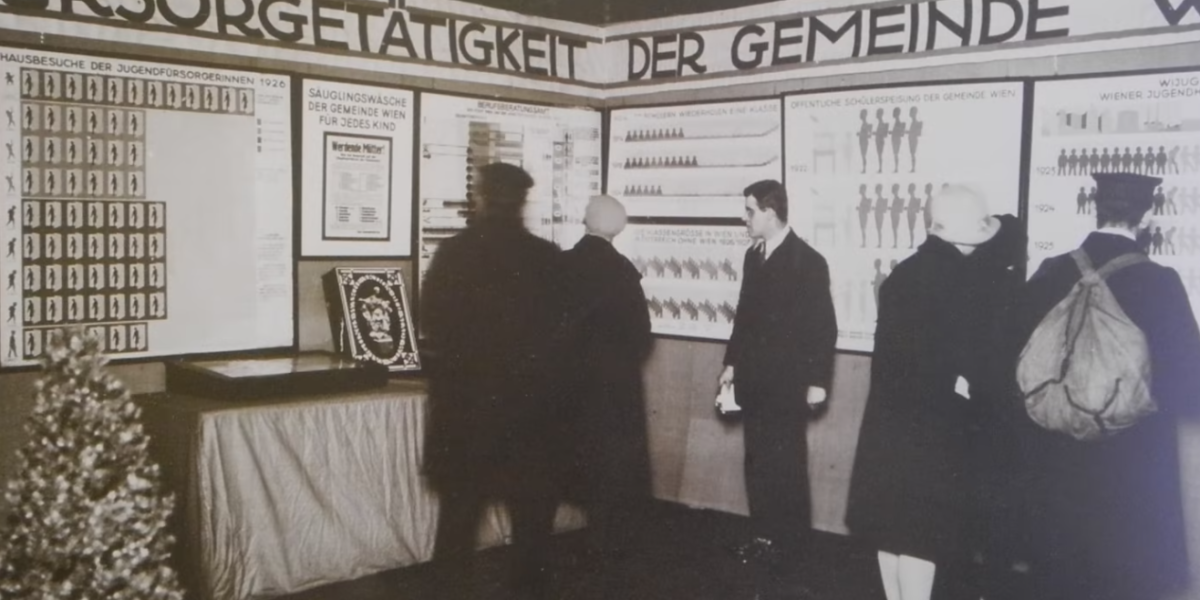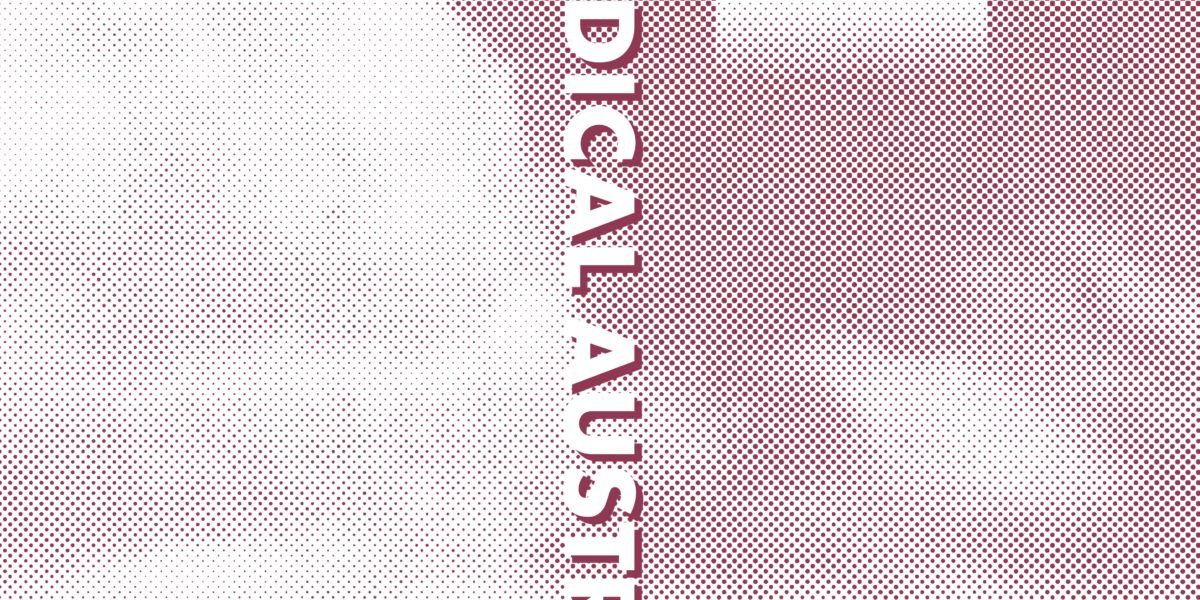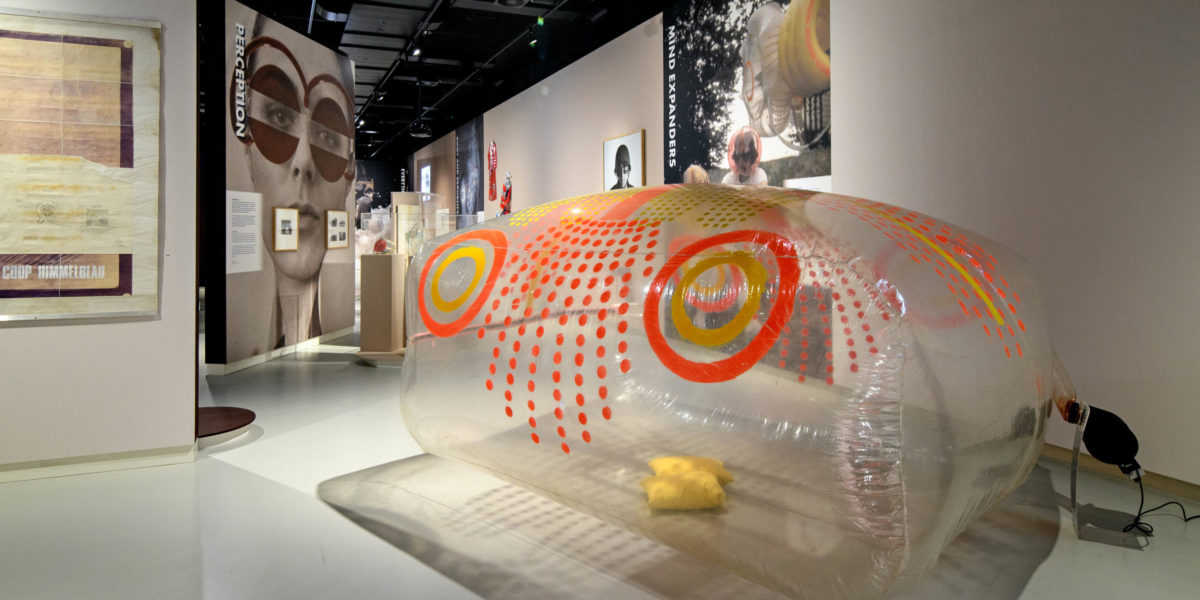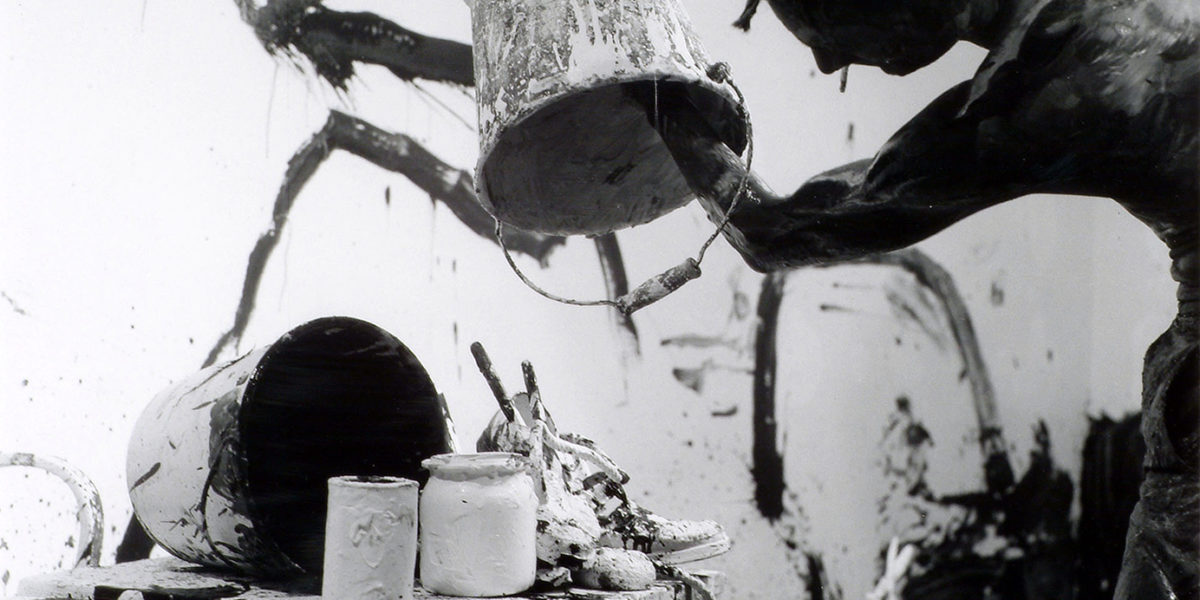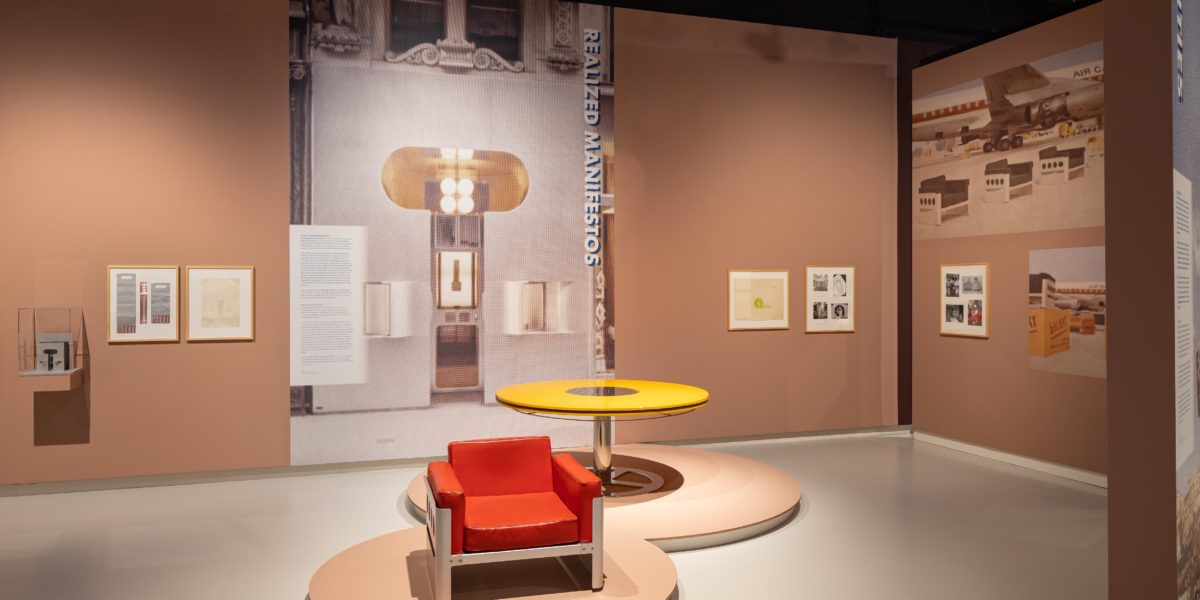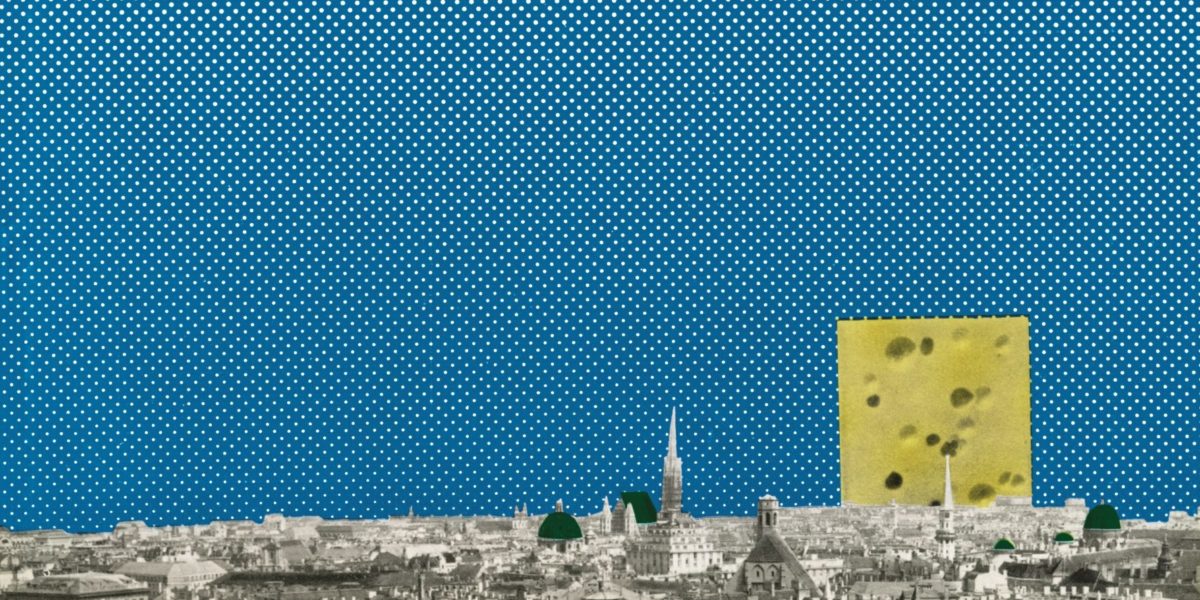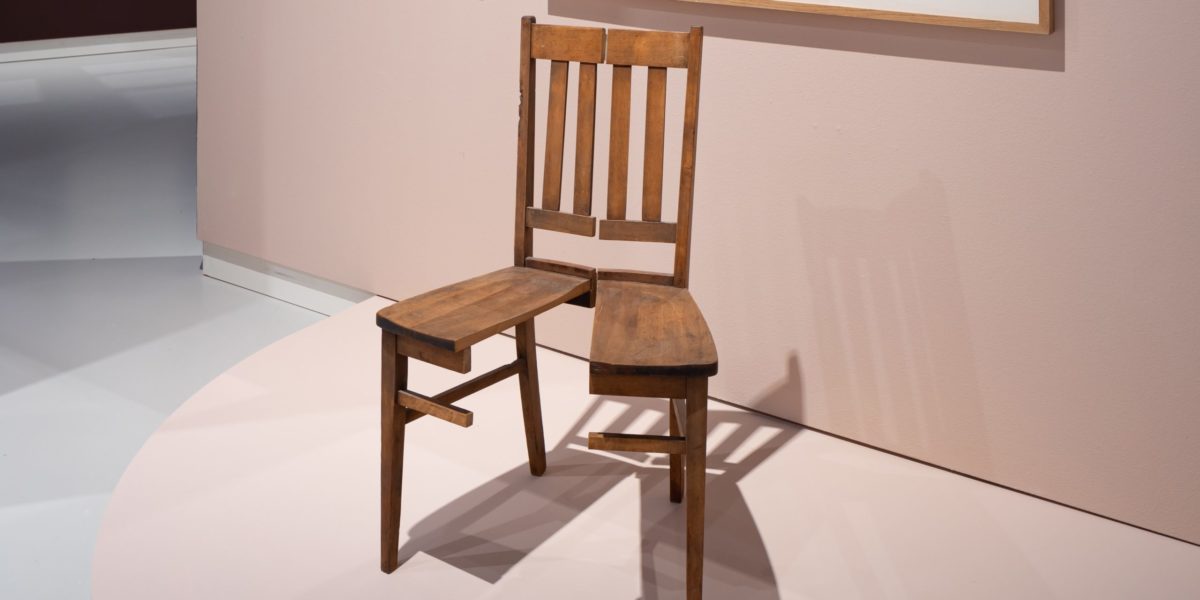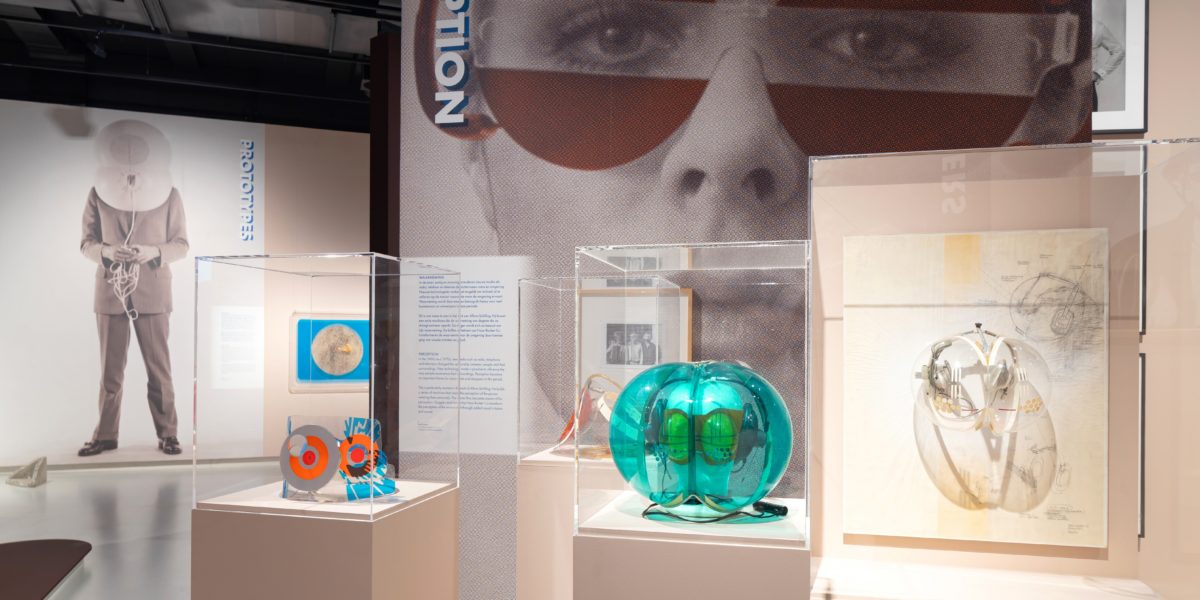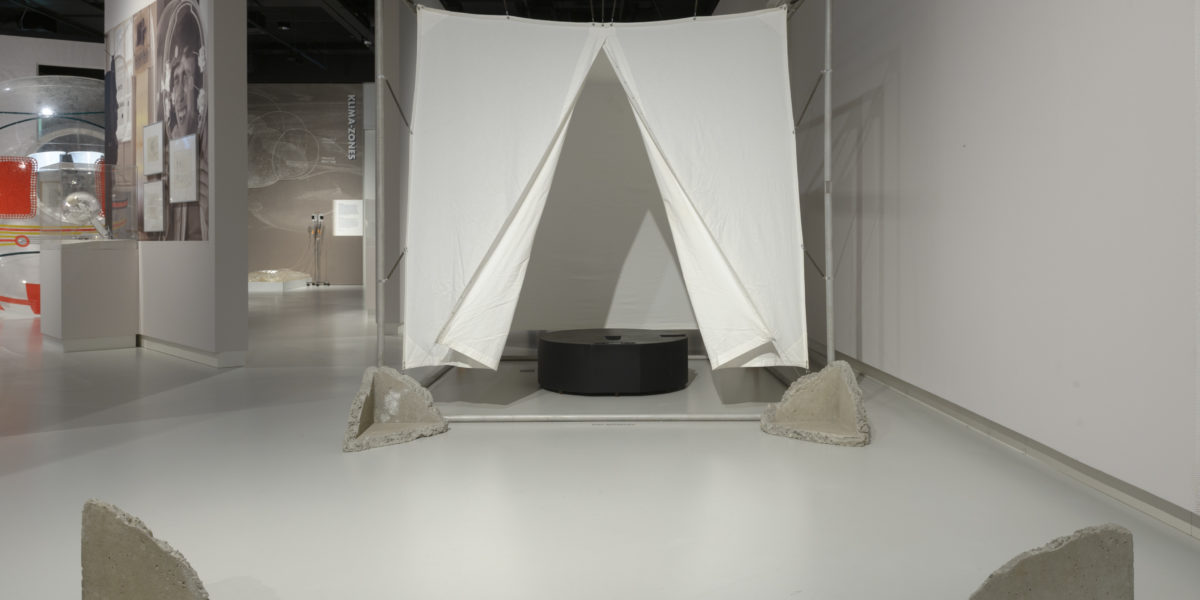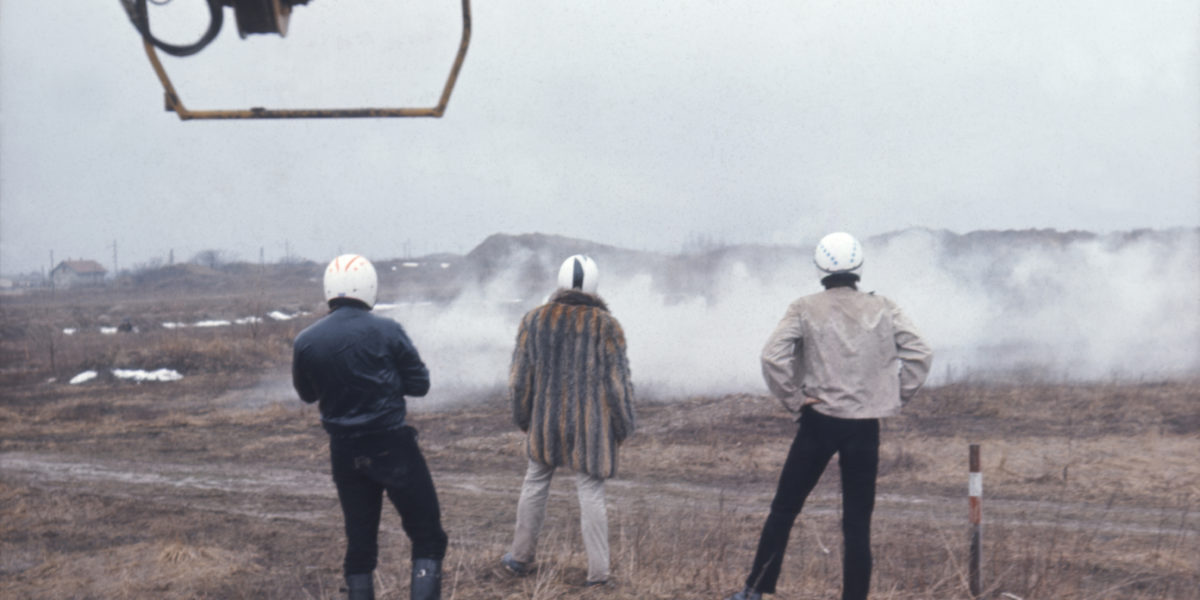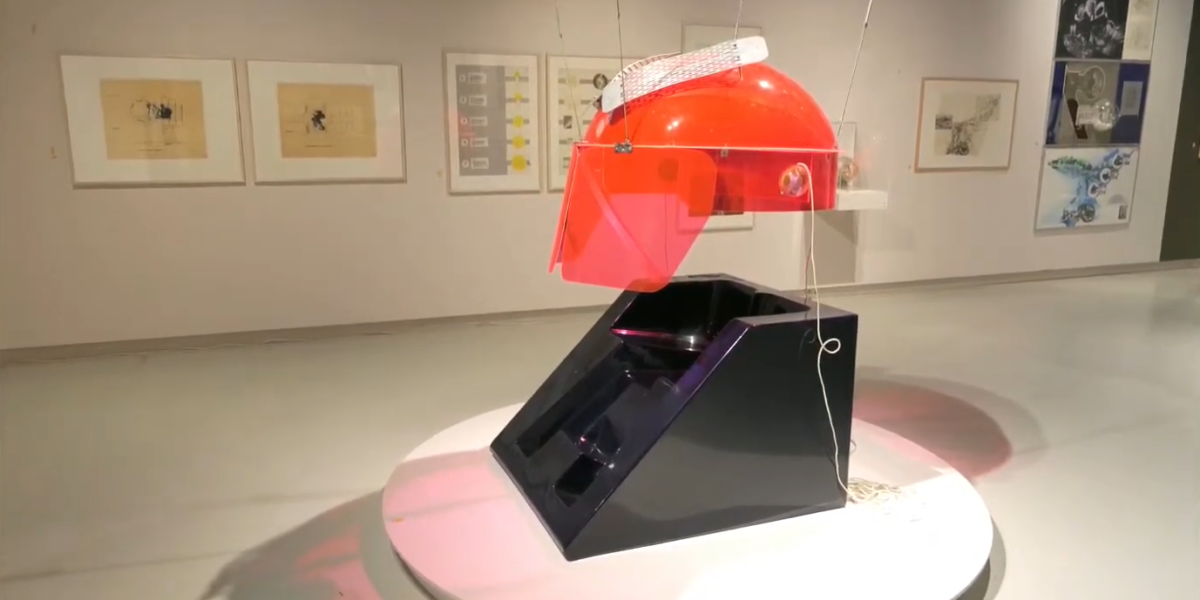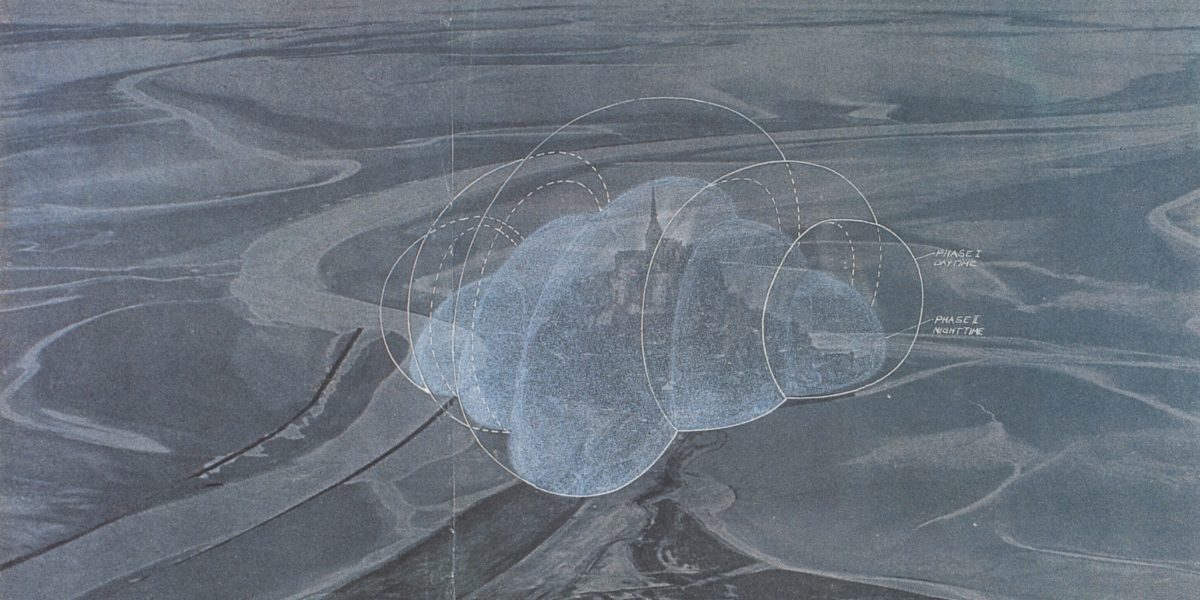This text by Bart Lootsma was originally published in the accompanying catalog of the exhibition. You can find the full catalog here.
Schöner Wohnen was an influential interior design magazine promoting a tasteful bourgeois lifestyle. Schöner Wohnen, or ‘the destruction of the habitable coffin’, on the other hand, is a film made by the architecture collective Salz der Erde in 1971 in which the ideal of Schöner Wohnen is mercilessly undermined.
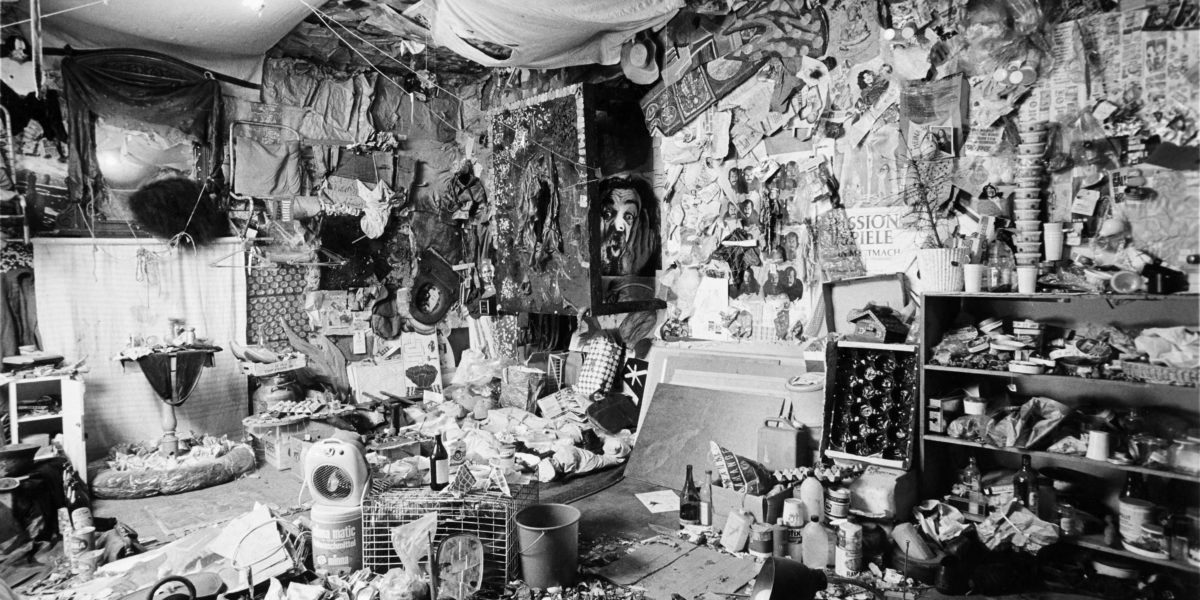
Johann Jascha, Schöner Wohnen, Vienna, 1969–1975.
The collectives Zünd-Up and Salz der Erde were directly influenced by Actionism. The members initially collaborated on some of Otto Mühl’s actions. The collaboration ended when they felt his conduct
was too authoritarian. They continued independently as Zünd-Up to eventually become Salz der Erde. Their provocative use of the (naked) body and their choice of materials is derived from the Actionists. But Zünd-Up and Salz der Erde were also inspired by the radical hippie counterculture in the United States.
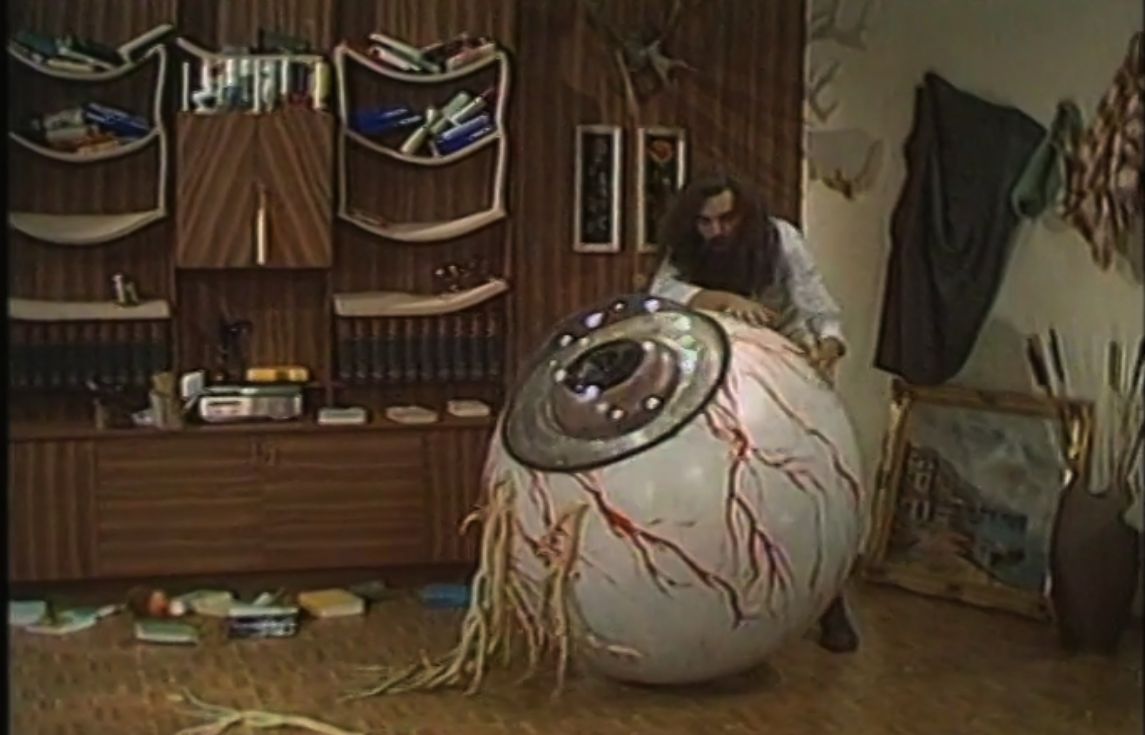
Salz der Erde, Schöner Wohnen oder die Zerstörung des Wohnsarges, 1971 (still). Collection Timo Huber.
In collages, performances and films, Zünd-Up and Salz der Erde protest against the social context of the architecture of their time. In their view, bourgeois and Catholic Austria has not yet disposed of its fascist past. Characteristic of the groups is their ambivalent attitude towards the ever-increasing fusion of body and technology, man and machine. They are fascinated by it, but also fiercely critical of it.
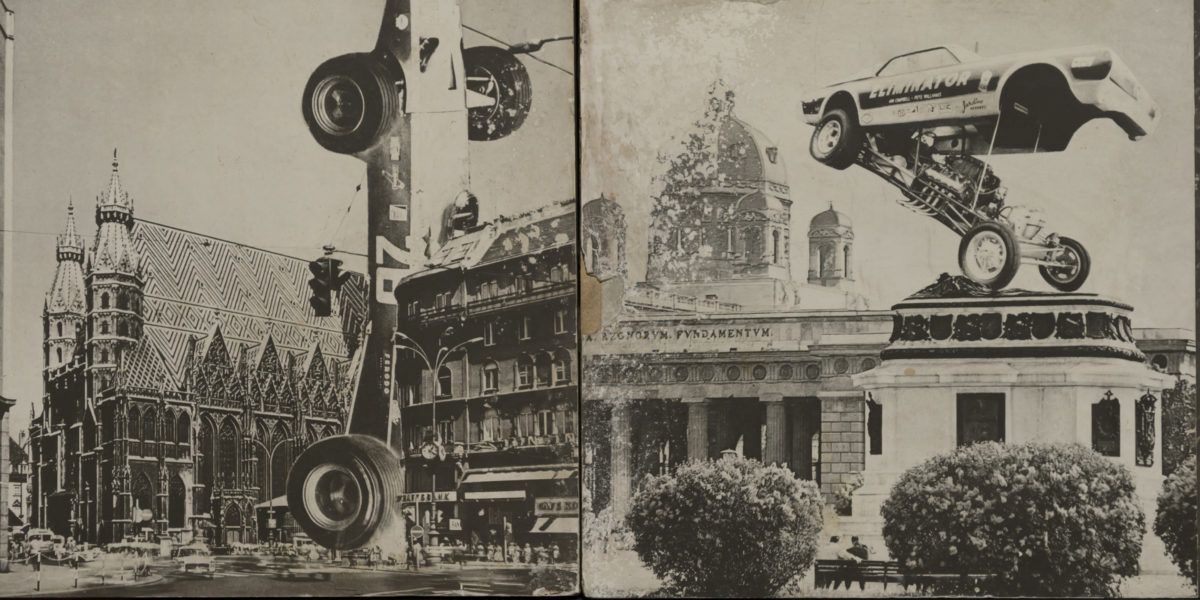
Zünd-Up, Triptychon (altar), 1970 (detail). Photo: Ben Nienhuis, Design Museum Den Bosch.

